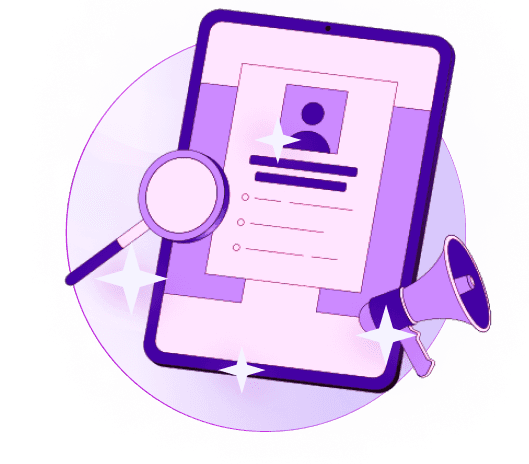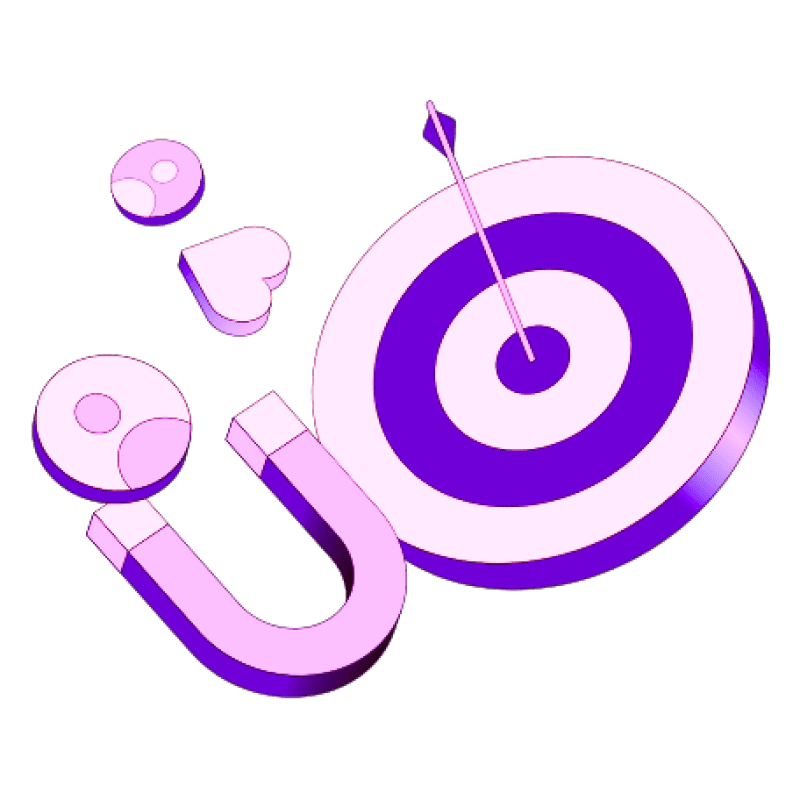Blogs
Articles

Outbound Automation Use Cases: How to Streamline Your Sales Process
Sales teams are seeing amazing results with outbound automation use cases. Companies that invest in AI and automation software report a 10-20% increase in sales ROI. The numbers tell an interesting story - 80% of high-performing sellers keep taking these tools.
This piece will help you tackle these challenges with practical outbound sales automation strategies. We'll show you how to streamline your sales process with automated lead generation and AI-powered outbound sales tools.
Let's head over to these adaptable solutions that can revolutionize your outbound campaigns and deliver meaningful results.
What is outbound sales automation?
Outbound sales automation shows how traditional sales processes have changed. Smart technology now handles repetitive manual tasks that used to eat up valuable selling time. The system manages routine sales activities while salespeople can focus on tasks that directly affect revenue.
You can think of outbound sales automation as your sales team's tireless digital assistant. The system efficiently handles these repetitive tasks:
Prospecting and lead generation
Cold email campaigns and follow-ups
Building and qualifying prospect lists
Lead assignment and tracking
Contract drafting and management
CRM updates and data enrichment
Multi-channel outreach sequences
Sales departments face a big problem - too much manual work keeps representatives from doing what they do best. Research shows an average outbound SDR books only fifteen meetings monthly, and only twelve actually happen. These numbers show why automation has become vital to success.
The goal isn't to replace human interaction but to make it better. As one industry source notes, "It's not about removing the human touch. It's about making sure the right message hits the right person at the right time automatically". This difference matters - automation handles mechanical tasks while humans build relationships.
Why automation matters in modern sales?
Sales organizations today face a new reality - they must improve efficiency to survive. HubSpot's data shows that teams who use automation tools boost their productivity by 14.5%. A McKinsey study also found that teams can automate 30% of their sales tasks. This lets sales reps focus on what matters most - building relationships and closing deals.
The numbers tell a compelling story. Sales automation cuts costs by 10-15%. It also reduces order processing from 2-3 days to just 1-2 hours. One advanced-industries company cut their proposal time from three weeks to hours by automating their process.
Common challenges in manual outbound processes
The outbound sales approach creates three big problems. Pipeline growth moves at a snail's pace. An average outbound SDR books fifteen meetings monthly, but only twelve happen. Companies need to keep adding people without getting proportional results.
Money becomes a huge issue quickly. An average SDR makes about $60,000 yearly to generate 8-10 qualified opportunities each month. Companies end up paying roughly $625 per opportunity and $3,125 per customer with a 20% close rate. Businesses with $10,000 average contract values already face a 31.25% cost of sale before other expenses kick in.
Sales reps burn out from doing the same tasks over and over. They spend only 35% of their time selling, while administrative work eats up the other 65%. Hours go to waste as they hunt for leads, research prospects, and copy data between systems. Then skilled SDRs end up working like virtual assistants.
Key Use Cases of Outbound Automation
Your sales efficiency will improve when you identify the right outbound automation use cases for your business needs. Here are five powerful applications that deliver measurable results.
Automated lead generation and scoring
AI-powered lead generation automation reduces the manual work of finding and qualifying prospects. Modern platforms score leads based on specific criteria like engagement metrics, firmographics, and behavioral data. This approach will give your team the ability to focus on prospects most likely to convert. Research shows that leads with higher scores are twice as likely to become customers. Companies that use automated lead scoring say that 56% extensively use this technology to prioritize leads.
Outbound email automation and follow-ups
Email sequences are the life-blood of effective outbound strategies. Smart automation tools help you create personalized email campaigns that trigger based on specific prospect actions. Follow-up automation maintains consistent communication. Studies suggest that sending at least three voicemails can increase callback rates from 11% to 33%. Tools like Persana combine smoothly to help you craft personalized follow-ups without manual work.
Automated outbound calling and voicemail drops
Sales representatives spend up to five hours weekly leaving voicemails. Voicemail drop technology lets teams pre-record messages and "drop" them with a single click when calls go to voicemail. Each representative saves more than 5 hours weekly. This gives them time to make meaningful calls to prospects who answer.
CRM updates and data enrichment
CRM updates take up valuable selling time. Data enrichment tools automatically add more information about prospects into your CRM system. The system captures demographics, social profiles, technographics, and behavioral data. This enriched data helps create better personalized and targeted outreach efforts.
Multi-channel outreach with AI sales automation
Modern outreach needs participation across multiple channels at once. AI-powered tools coordinate outreach across email, LinkedIn, phone calls, and SMS. The best platforms help teams create automated sequences that move prospects between channels based on their interactions. This ensures no lead gets overlooked.
Future of Outbound Sales Automation
The global sales automation market will grow from $1.30 billion in 2020 to $6.50 billion by 2025. This represents a 34.4% compound annual growth rate. Let's look at what's next for outbound automation use cases.
Emerging trends in sales automation technology
Multimodal AI and cross-channel orchestration have changed the game for outbound teams. These systems coordinate sales efforts through email, LinkedIn, phone, and SMS while maintaining awareness of previous interactions. Gartner reports that companies using multi-channel sales strategies boost their sales by 20-30% compared to single-channel approaches.
AI-powered content creation helps craft customized messages at scale. Sales teams can now ask questions in plain language and get instant insights through conversational data queries.
AI-powered outbound sales agents
A fundamental change has occurred in outbound sales through autonomous sales agents. These AI tools now manage complete sequences of prospecting, follow-up, qualification, and meeting scheduling. Research shows 75% of companies will implement AI-powered sales tools within the next two years.
Persana and similar tools have revolutionized the SDR role. AI agents don't replace sales professionals - they help them focus on relationship nurturing, complex negotiation, and strategic advisory.
Integrating outbound sales CRM with automation tools
CRM integration has become more sophisticated. AI-enhanced BI platforms use machine learning to identify trends and recommend next actions. The future will bring a unified data ecosystem where sales, marketing, finance, and operations information merges naturally.
How predictive analytics will shape outbound campaigns
Predictive analytics has revolutionized lead prioritization. Companies that make use of information-based lead prioritization see 14.5% higher conversion rates than those using intuition-based methods.
Predictive ERPs will soon forecast market shifts, optimize inventory, and adjust sales strategies in live time. Buzzsumo and Google Trends provide predictive analysis of web traffic based on published content. This marks just the beginning of AI's potential to advance outbound sales capabilities.
Conclusion
Outbound sales automation changes how sales teams operate in today's competitive digital world. This piece shows how automation tools address the biggest problems facing sales departments - from slow pipeline growth to spiraling costs and representative burnout. Teams that accept new ideas in this space will definitely gain an edge. They boost productivity by 14.5% and reduce operational costs by up to 15%.
Our exploration of five key automation use cases provides practical starting points to streamline the sales process. Your team can focus on high-quality prospects with automated lead generation. Email automation and follow-up sequences keep communication consistent without manual work. Voicemail drops and automated CRM updates save countless hours that were lost to administrative tasks.
AI-powered sales agents will evolve and handle complex aspects of the sales process in the future. These tools don't replace human representatives - they lift their role toward relationship building and strategic advisory. The real question isn't whether to implement outbound automation, but how fast your team can adopt these powerful solutions.

Create Your Free Persana Account Today
Join 5000+ GTM leaders who are using Persana for their outbound needs.
How Persana increases your sales results
One of the most effective ways to ensure sales cycle consistency is by using AI-driven automation. A solution like Persana, and its AI SDR - Nia, helps you streamline significant parts of your sales process, including prospecting, outreach personalization, and follow-up.



